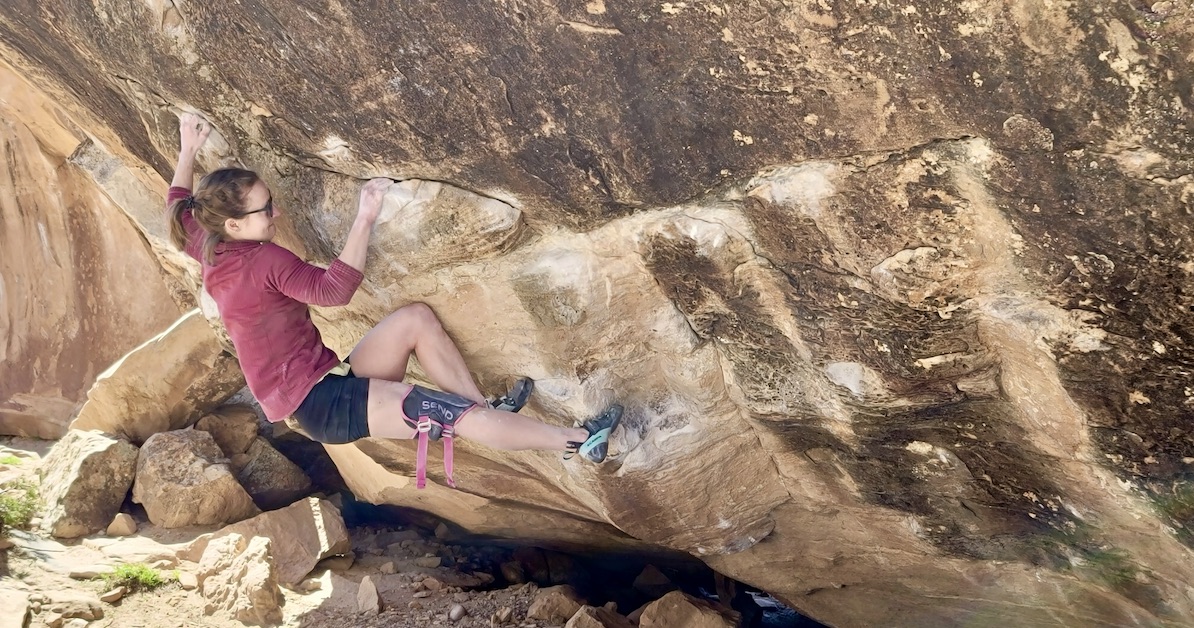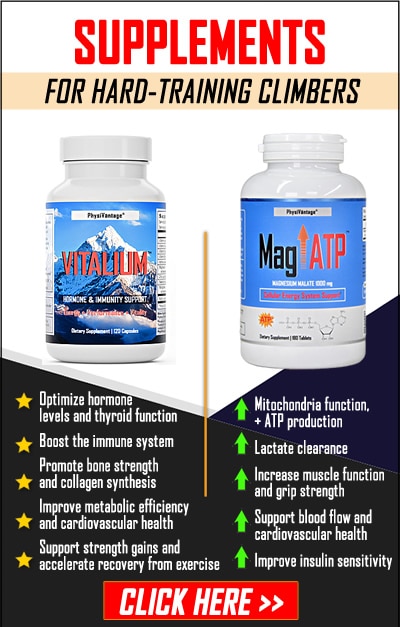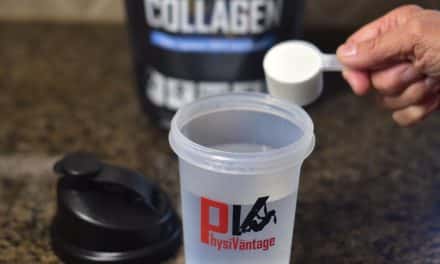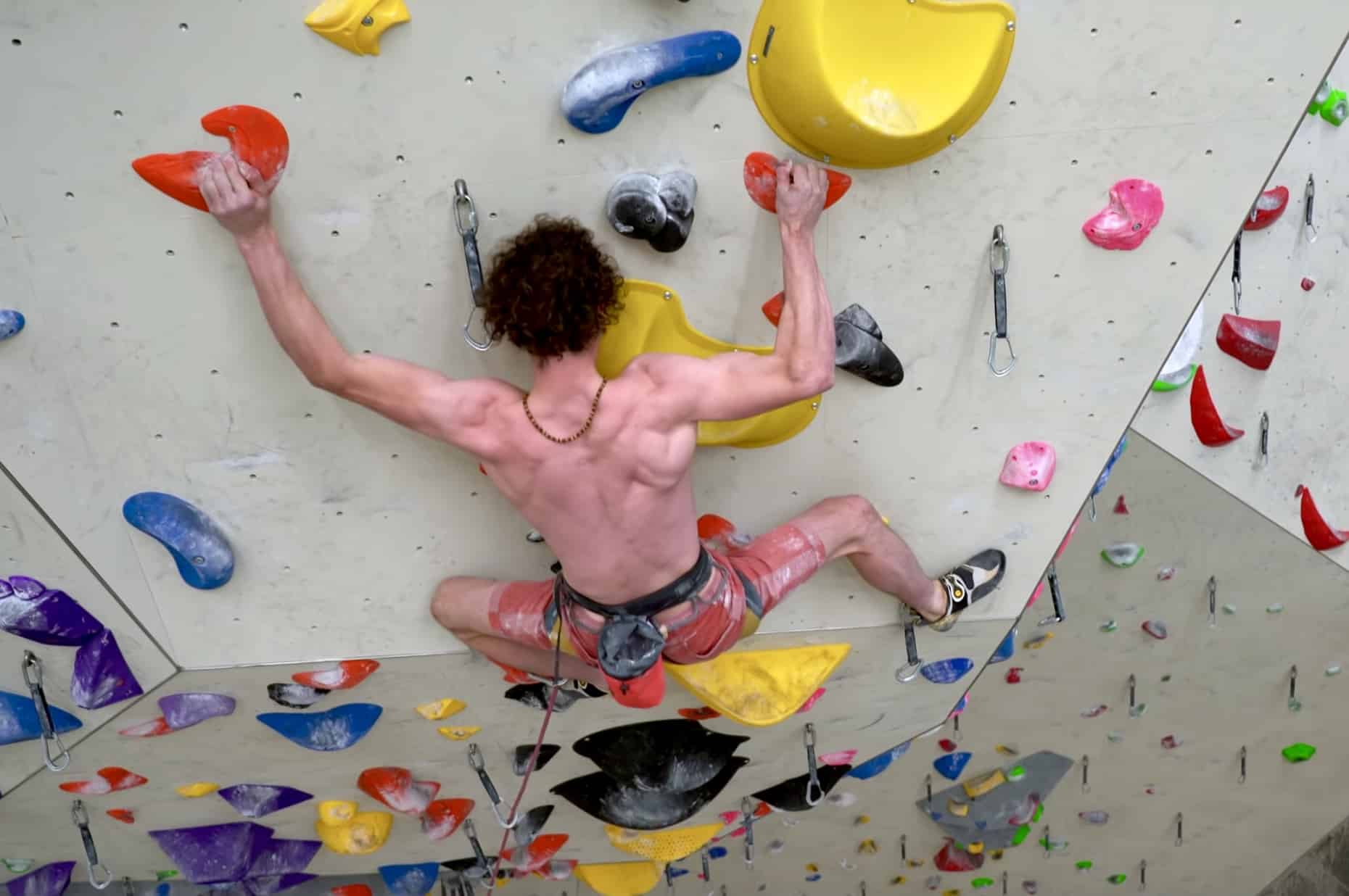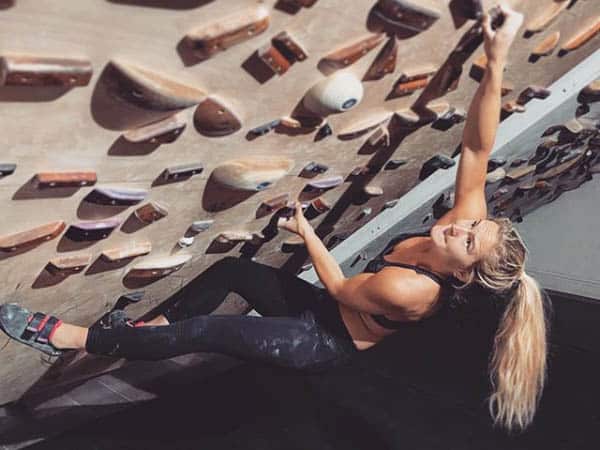The typical weekend warrior schedule doesn’t leave much room for rest between hard outdoor sessions. Learn how to make the most of back-to-back climbing days with these tips for quick recovery!
In an ideal world, we’d show up to each climbing session completely recovered from the last and ready to give it our all. Many professional climbers who build their lives around optimal performance eventually learn to crack the code on how to do this. The average “weekend warrior”, however, often struggles to balance recovery with performance.
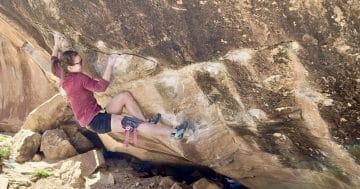
To get the most out of your weekend, you need a smart strategy for recovery in between crag days.
Work, family, and other commitments often limit nonprofessional climbers to the standard Saturday-Sunday crag schedule. Climbing two days in a row like this makes recovery tricky. There’s just no way to get back to 100% overnight. The body needs upwards of 48 to 72 hours of rest to heal from the strain of a hard climbing day.
So what’s a weekend warrior to do? Don’t let the perfect be the enemy of the good. Make the most of the quick turnaround. Complete recovery might not be possible, but a few smart decisions can get you close. Give yourself the best chance of showing up refreshed and ready on Sunday morning with this Saturday night recovery checklist.
Eat Up
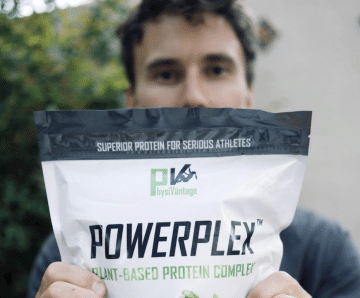
Refuel as soon as you can with a quick-hitting combination of protein and carbohydrate to give your body the best chance of repairing in time for the next day.
Food is your most valuable tool for recovery. You should already be consuming plenty of high-energy, carbohydrate-heavy foods to keep you going throughout your climbing day, but what you eat after leaving the crag matters just as much. Feed your hungry muscles with a post-climbing snack as soon as you finish your final pitch of the day. It’s important to catch this initial window of recovery right after wrapping up a long, hard day of climbing.
Professional climber and sports dietitian Amity Warme recommends a 3:1 ratio of carbs to protein (i.e. 60 grams of carbs + 20 grams of protein) for the sake of both muscular repair and glycogen replenishment. My go-to travel-friendly recovery snack, protein cereal (one scoop of PhysiVantage Weapons-Grade Whey or Powerplex Plant-Based Protein + one cup plain cheerios + ¼ cup raisins or other dried fruit, mixed with a little water or dairy/plant-based milk to liquify the protein powder), comes pretty close to the ideal ratio with 20 grams of protein and 55 grams of carbohydrate.
But that’s just the first course. This second window of recovery extends out one to three hours post-activity, just in time for dinner. No need to be quite so rigid with ratios this time. A balanced meal consisting of equal parts carbs, protein, and healthy fats will build off of the first snack to keep the recovery train going.
Finally, if you have a sweet tooth (like yours truly), consider finishing out the night with a high-protein dessert. This last bite helps cap off recovery and initiates fueling for the next day. I nibble on Perfect Bars before bed for this purpose, a “superfood” snack that just so happens to taste like a candy bar.
Shake It Out
While you’re waiting for dinner to cook, get the blood flowing. This simultaneously sends fresh oxygen to your muscles and flushes out leftover metabolic byproducts. Massage therapy is one of the most effective ways to stimulate blood flow and relax tight muscles for the sake of a speedier recovery. Most of us don’t have a personal masseuse on call so we’re on our own for this one.
Luckily, there are plenty of tools out there that make self-massage a breeze. The ultra-portable R1 percussion massage gun, for example, accompanies me on every climbing trip so I can target key areas like the shoulders, forearms, hips, and calves before they tighten up too much post-climb. Myofascial tools, such as the Wave Tool, address soft tissue strain—even in those tough-to-reach nooks and crannies like between the fingers or deep in the elbow joint. And don’t underestimate the effectiveness of simple mobility exercises like shin boxes or wall angels that don’t require any equipment. Anything you can do to ease bodily tension in the first few hours of your recovery timeline will make a big difference in how agile you feel tomorrow.
Sleep Hard
There’s no overstating the importance of a good night’s sleep. This is when your body has the chance to shut down all the extraneous tasks that sap energy during waking hours and zone in on repairing the day’s damage. “Normal” people require seven to eight hours of sleep to function favorably. Athletes who tax their bodies more than the average person should aim even higher. Eight, nine, or even ten hours is optimal.
But that’s much easier said than done. Time flies when you’re having fun reliving the day around the campfire with friends. It takes discipline to call it a night at a reasonable hour. Make it a group effort and hold each other accountable to turn in by 10pm. You can’t have FOMO if there’s nothing to miss!
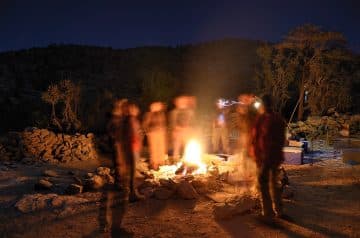
Call it a night before your campfire conversations put a damper on your next climbing day.
There’s also a difference between sleep and quality sleep. While you might feel exhausted, the stress of a big outdoor day can actually make it harder to sleep. Add in a couple adult beverages, stimulating conversations, late summer sunsets, and awkward camping setups, and you might find yourself tossing and turning more than actually sleeping. Combat these detractors with good sleep hygiene habits. Consider skipping the nightcap (at least within three to four hours of bedtime), experimenting with meditation, using an eye mask, supplementing with evening doses of MAG-ATP and Redux, and creating a comforting sleeping space. If you’re camping out away from home, this last piece can be especially tough. Treat yourself like a nervous kindergartener at naptime. Bring along something that reminds you of your regular sleeping environment, like a favorite pillow. A little familiarity goes a long way towards calming the nervous system.
Bonus: Be Prepared
Preparedness isn’t directly related to recovery, per se. But as they say, time is money. Or, in this case, time is energy. The more time you can save, the more energy you can squirrel away to use on your project. Every minute you don’t have to spend getting ready to go is one you can spend on any of the above recovery tactics.
Take stock of all the “time sinks” in your climbing schedule. How can you make your day more efficient? Sticking to the same crag snacks, for example, eliminates all the hemming and hawing about what to bring each time. Same with keeping your bag mostly packed, camping instead of driving back and forth, and relying on efficient evening wind-down and morning warm-up routines. Take back as much spare time as you can, and put it towards recovery.
Related Articles:
- Fueling for Sending with Amity Warme, Climbing Dietitian
- Performance Nutrition Through the Lens of Top Pro Climbers
- Recharge Your Climbing Batteries for Energy and Improvement
- Manage Fatigue and Accelerate Recovery
- How to Develop Stronger, Healthier Fingers and Tendons for Climbing
Copyright © 2000–2023 Lucie Hanes & Eric J. Hörst | All Rights Reserved.

